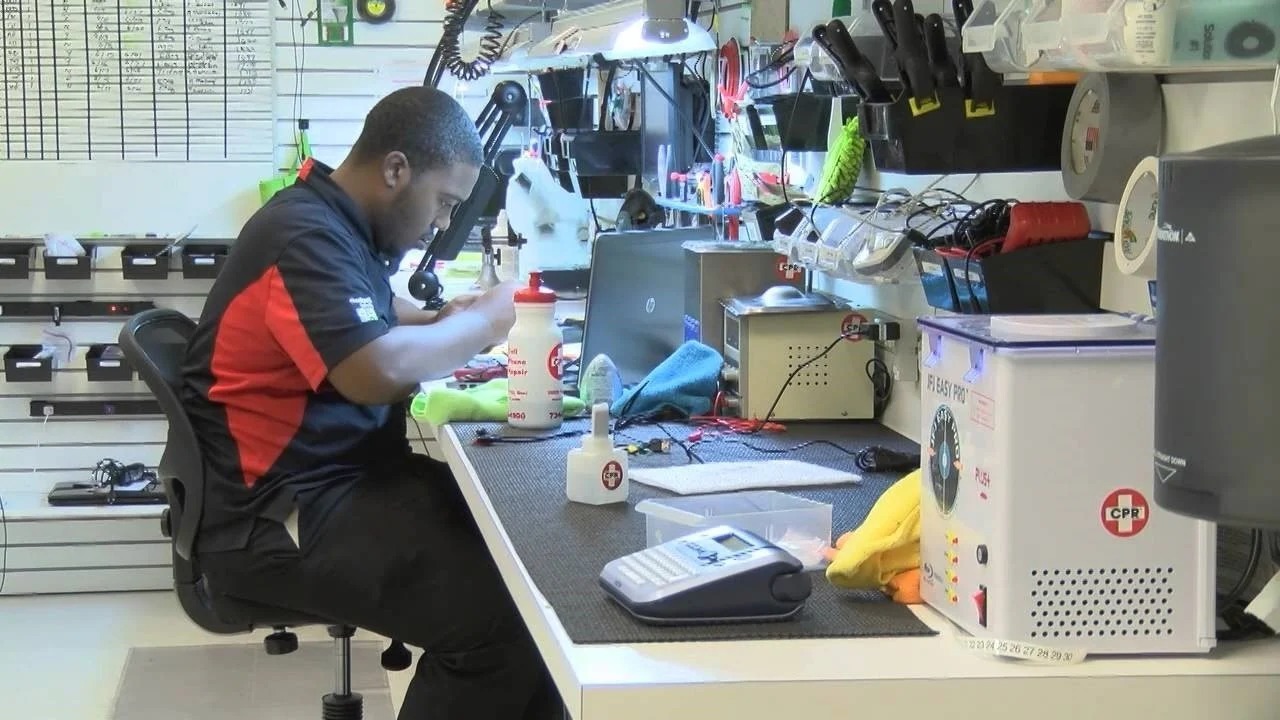Wondering where you might be going wrong in terms of operations at your cell phone repair store?
Whether you like it or not, operating a computer and cell phone repair company can be deceptively difficult. Behind the scenes of the well arranged shop counter is a tangled mix of operational issues. Business owners that misunderstand the complexity required may find these challenges too much. That’s because in the service-based industry, you are required to balance everything from inventory and customer expectations to guaranteeing operational efficiency while embracing automation.
The Complex Character of Repair Business Operations
The repair sector calls for technical knowledge, quick turnaround, and accuracy. Repair services need diagnostic precision as opposed to retail, where items are offered off the shelf. Every item has its own flaw, hence to quickly fix problems specialists need great expertise. Inconsistent job lengths, different prices, and regular component mismatches follow from this unpredictability.
Repair shop owners have to balance several duties at once on top of that: managing walk-ins, responding to calls, customer updates, invoicing management, and inventory control. Even the most talented professionals find it difficult without a strong procedure and workflow. The daily grind can rapidly spin out of control and lead to missed deadlines, bad client experiences, and unfavorable comments. So this where you need to rely on technology in the form of repair shop management software.
How Thriving Repair Shops Differ
Successful repair shops have various traits that distinguish them. They give customer communication top priority, have tidy and orderly workplaces, and train their staff members. A successful repair shop also appreciates openness—whether it concerns warranty terms, turnaround times, or pricing. This fosters confidence and motivates recurring business.
Many of these stores have a methodical process that reduces uncertainty. Jobs are logged as they come in, devices are identified and tracked, and updates are proactively shared with customers. Tightly regulated inventory guarantees that components are available as required without overstocking. Every move supports seamless operations and staff members know their responsibilities well.
Their eagerness to adopt technology is another frequent characteristic. They run their businesses using purpose-built software instead of depending on spreadsheets or human logs. These technologies allow real-time visibility into every area of the company, so facilitating quicker decisions and less errors.
Lessons From Failed Repair Companies
Conversely, many repair firms shut their doors in the first several years. Common reasons are inadequate financial management, insufficient marketing, uneven quality, and staff turnover. A closer look, nevertheless, shows operational disorder at the core of many failures.
Often, failing companies have disorganized inventory. Parts go missing, get mislabelled, or expire on the shelf. Rather than concentrating on repairs, technicians waste precious time searching for parts. Inaccurate or delayed billing causes lost income and dissatisfied customers. Lack of recorded procedures fosters inefficiency; communication gaps between staff and consumers causes misunderstanding.
These companies often fight transformation. While their rivals embrace contemporary technologies, they keep employing antiquated techniques. No data means no way to gauge performance or spot areas for development. Being slow to change might be a death sentence in a world where customer expectations are growing.
Repair Shops and their Need for Automation
Modernizing a repair company depends much on automation. Owners may concentrate on expansion and strategy by means of automation of tedious and time-consuming chores. Customer communication is among the most important fields for automation. Automated status updates, reminders, and follow-ups keep consumers informed without using staff time.
Workflow automation is another important subject. A strong repair management system can automate service tracking, technician assignment, and task reporting. This guarantees every device follows a specified repair path and helps to prevent errors. Automation helps to keep uniformity across teams as well, irrespective of who does the task.
Improving Operational Efficiency for Long-term Success
Operational efficiency is about doing more with less, not only about speed. From intake to delivery, efficient repair shops simplify every process. They chart their procedures, find bottlenecks, and cut out superfluous actions. Every activity is purposeful and in line with corporate objectives.
A standardized process guarantees that every team member follows the same approach. It increases consumer happiness, cuts repair time, and lowers mistakes. Efficient stores also establish performance standards to monitor customer feedback, turnaround times, and technician output. This information turns into a means of constant development.
Providing Outstanding Customer Satisfaction
Customer happiness may either build or kill a repair company in the competitive environment of today. Customers want quick service, open communication, and consistent outcomes. Consistently exceeding these expectations calls for more than technical knowledge; it also calls for empathy, openness, and professionalism.
Repair companies that prioritize customer service usually have better reviews and greater retention rates. They cordially welcome consumers, clearly define problems, and set time and cost expectations. Building confidence also much depends on post-service follow-ups and warranties.
Modern Inventory Management
One of the main sources of frustration for repair shops is antiquated inventory methods. Manual records cause stock imbalances, lost sales, and over-ordering. A contemporary inventory control system turns this disorder into order. It monitors every component from purchase to installation and instantly highlights low-stock items.
Vendor integration enables pricing comparisons and automatic reordering. Serialized inventory aids fraud prevention and warranty tracking. Improved component management enables companies to save money, minimize waste, and speed up repairs.
Final Thoughts
Running a computer repair company and cell phone is much more difficult than it seems. It calls for technical knowledge, business savvy, and a strong dedication to operational excellence. Successful repair shops embrace automation, improve their procedures, and prioritize the consumer first.
Failed companies, on the other hand, frequently struggle with inefficiency, poor communication, and reluctance to change. The distin





